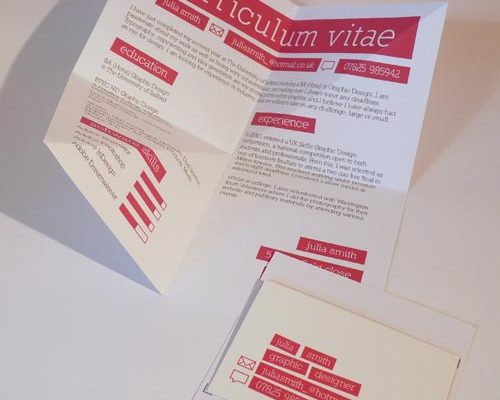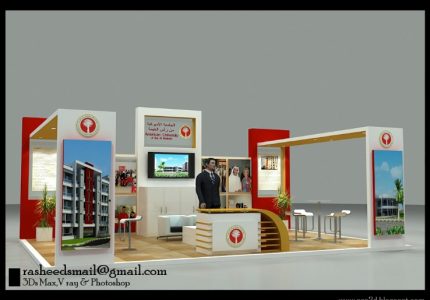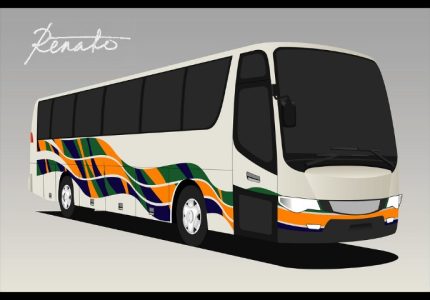Overview of Graphic Design at UJ
Graphic design at the University of Johannesburg (UJ) offers students a comprehensive education in visual communication and digital artistry. The program combines creative skills with technical knowledge, preparing graduates for diverse careers in advertising, branding, illustration, and multimedia. With state-of-the-art facilities and experienced faculty, UJ provides an inspiring environment for aspiring designers to develop their unique style and industry-ready expertise.
Program Objectives and Goals
Graphical Design at the University of Johannesburg (UJ) offers a comprehensive program aimed at developing students’ creative and technical skills in visual communication. The program emphasizes innovative thinking, design principles, and practical applications to prepare students for diverse careers in the graphic design industry.
The objectives of the Graphic Design program at UJ include fostering students’ ability to conceptualize and execute compelling visual ideas, integrate theory with practical skills, and adapt to evolving digital tools and media. It aims to cultivate originality, critical thinking, and a professional approach to problem-solving in the field of visual communication.
The goals of the program are to produce well-rounded graduates who are capable of contributing creatively and effectively to various sectors such as advertising, branding, digital media, and print design. UJ’s Graphic Design program seeks to equip students with the necessary skills, knowledge, and ethical understanding to succeed and innovate in the competitive world of visual design.
Accreditation and Qualification Levels
Graphic Design at the University of Johannesburg (UJ) offers students a comprehensive program that combines creativity, technical skills, and practical application to prepare graduates for dynamic careers in visual communication. The course emphasizes both traditional and digital design techniques, fostering innovative thinking and problem-solving abilities.
The program is accredited by relevant educational authorities, ensuring that qualifications obtained are recognized nationally and internationally. UJ’s graphic design courses are designed to meet industry standards, providing students with a competitive edge in the job market.
Qualifications in graphic design at UJ are offered at various levels, including NQF Level 6 (Diploma), NQF Level 7 (Bachelor’s Degree), and postgraduate qualifications such as Honours and Master’s degrees. These qualification levels allow students to progressively develop their expertise and pursue specialized interests within the field of graphic design.
Career Opportunities for Graduates
Graphic Design at UJ offers a comprehensive program that combines creative skills with technical knowledge, preparing students for dynamic careers in visual communication. The curriculum emphasizes both theoretical understanding and practical application, enabling students to develop innovative design solutions across various media platforms.
Graduates of the UJ Graphic Design program have a wide range of career opportunities, including roles such as graphic designers, branding specialists, advertising creatives, multimedia artists, and visual communication consultants. They can work in advertising agencies, publishing houses, digital media firms, corporate branding departments, or even establish their own design studios. The program equips students with the skills to thrive in a competitive industry and adapt to evolving technological advancements.
Curriculum and Course Structure
The curriculum and course structure at UJ for graphic design are thoughtfully designed to equip students with both foundational skills and advanced techniques in the field. Emphasizing a blend of theoretical knowledge and practical experience, the program aims to develop creative and innovative designers ready to meet industry standards. This structured approach ensures students gain comprehensive expertise, preparing them for diverse career opportunities in the dynamic world of graphic design.
Core Courses and Specializations
The curriculum and course structure for graphic design at UJ are designed to provide students with comprehensive knowledge and practical skills in the field. The program combines core courses that establish fundamental concepts with specialization options to tailor the learning experience to individual interests.
Core courses typically include:
- Introduction to Graphic Design
- Typography and Visual Communication
- Design Principles and Theory
- Digital Imaging and Editing
- Drawing and Illustration Techniques
- Design History and Criticism
Students can choose from various specializations to deepen their expertise, such as:
- Brand Identity and Logo Design
- Web and User Interface Design
- Advertising and Marketing Graphics
- Motion Graphics and Animation
- Packaging Design
Practical Workshops and Studio Projects
At UJ, the graphic design program features a comprehensive curriculum that blends foundational principles with advanced techniques, ensuring students develop both technical skills and creative thinking. The course structure is thoughtfully organized to include core modules in typography, layout, branding, and digital media, complemented by elective options allowing specialization in areas such as animation or motion graphics. Practical workshops are integral to the learning process, providing hands-on experience with industry-standard software and tools, fostering collaboration, and encouraging experimentation. Studio projects serve as key components of the program, offering students real-world scenarios to apply their knowledge, hone their problem-solving abilities, and build a professional portfolio that showcases their talent and readiness for the industry. This blend of theory, practice, and project work ensures a well-rounded education in graphic design at UJ.
Electives and Interdisciplinary Courses
The curriculum and course structure for graphic design at the University of Johannesburg (UJ) are designed to provide a comprehensive foundation in both theoretical and practical aspects of the discipline. Students are guided through core courses that cover fundamental design principles, typographies, color theory, digital tools, and visual communication. The program encourages a blend of creative exploration and technical skills to prepare students for diverse careers in the industry.
Electives in the graphic design program at UJ allow students to tailor their education to specific interests, such as animation, branding, illustration, or interactive media. These electives offer opportunities for specialization and deepen students’ expertise in particular areas of graphic design.
Interdisciplinary courses are also integrated into the curriculum, promoting collaboration across various fields such as marketing, computer science, and fine arts. This approach enhances students’ versatility and prepares them to tackle complex, real-world projects that require a multifaceted skill set. Overall, the curriculum aims to foster innovative thinking, technical proficiency, and a broad understanding of the role of graphic design in society.
Facilities and Resources
At the University of Johannesburg, the facilities and resources available for graphic design students are designed to foster creativity and practical skills. State-of-the-art computer labs, equipped with the latest design software, provide students with the tools they need to bring their ideas to life. Additionally, access to a well-stocked library, digital media centers, and collaborative workspaces ensures that students have comprehensive support throughout their academic journey. These resources create a dynamic environment conducive to innovation and professional growth in the field of graphic design.
Design Studios and Equipment
At UJ, the graphics design program offers state-of-the-art facilities and resources to foster creativity and innovation among students. The design studios are well-equipped with the latest software and hardware, providing an ideal environment for practical learning and project development. These studios feature spacious work areas, high-performance computers, and advanced graphic tablets to support diverse design processes. UJ also ensures access to an extensive collection of reference materials, digital tools, and printing facilities, enabling students to experiment and refine their work effectively. Overall, the facilities and resources are designed to cultivate a professional and inspiring setting for future graphic designers.
Software and Digital Tools
At the University of Johannesburg (UJ), the Graphic Design department is equipped with a comprehensive range of facilities and resources to support students in developing their skills and projects. The department boasts modern studios, computer labs, and dedicated workspaces designed for creative collaboration and individual work. These facilities are regularly updated to ensure access to the latest technology and equipment, fostering an innovative learning environment.
Students have access to advanced software and digital tools essential for contemporary graphic design. This includes industry-standard programs such as Adobe Creative Cloud suite—Photoshop, Illustrator, InDesign, and After Effects—allowing students to create, edit, and produce professional-quality designs. Additionally, digital tablets and interactive media tools support versatile creative expression. The department also provides online resources and tutorials to facilitate continuous learning and skill enhancement outside of classroom hours.
Library and Learning Resources
The Facilities and Resources at UJ for graphic design students are designed to support creative development and technical proficiency. The university provides state-of-the-art laboratories, dedicated design studios, and modern computer workstations equipped with industry-standard software to facilitate practical learning and project execution.
Library and Learning Resources for Graphic Design at UJ
UJ’s library offers comprehensive resources tailored to graphic design students, including an extensive collection of books, journals, and digital media on visual arts, design principles, and digital media tools. Additionally, students have access to online databases and learning platforms that enhance research capabilities and support coursework.
- Specialized design books and reference materials covering typography, branding, and digital illustration.
- Access to professional software such as Adobe Creative Suite, Sketch, and other relevant graphic design tools.
- Workshops and tutorials offered regularly to enhance technical skills and software proficiency.
- Collaborative spaces and multimedia labs that encourage group work and creative experimentation.
- Online learning modules and digital resources that supplement classroom instruction and independent study.
Faculty and Expert Instructors
Our faculty and expert instructors at UJ are dedicated to providing high-quality education in the field of graphic design. With extensive industry experience and academic expertise, they guide students through creative processes, technical skills, and innovative approaches. Their mentorship ensures that aspiring designers develop the necessary talents to excel in the dynamic world of visual communication.
Faculty Profiles and Expertise
The Faculty and Expert Instructors at UJ are experienced professionals dedicated to providing high-quality education in graphic design. Their diverse backgrounds and extensive industry knowledge ensure students receive comprehensive and practical training. Faculty Profiles highlight each instructor’s unique expertise, including areas such as visual communication, digital illustration, branding, and user interface design. With a strong focus on innovation and real-world applications, these experts foster a creative learning environment that prepares students to excel in the dynamic field of graphic design.
Industry Experience of Instructors
Our faculty and expert instructors at UJ bring a wealth of industry experience and academic excellence to the graphic design program. Their diverse backgrounds ensure students receive practical knowledge combined with innovative teaching methods, preparing them for real-world challenges in the creative industry.
Guest Lectures and Industry Partnerships
At UJ, the graphic design program is enriched by a team of faculty and expert instructors who bring extensive industry experience and academic expertise, ensuring students receive a comprehensive and practical education. Guest lectures are regularly organized, featuring renowned designers and industry leaders, providing students with valuable insights into current trends and real-world challenges. Additionally, UJ maintains strong industry partnerships, facilitating internships, collaborative projects, and networking opportunities that help students build professional connections and enhance their career prospects in the dynamic field of graphic design.
Student Projects and Portfolios
Student projects and portfolios play a crucial role in showcasing the creativity and skills of aspiring graphic designers at UJ. They serve as a valuable platform for students to demonstrate their unique ideas, technical abilities, and artistic growth throughout their academic journey. By developing a diverse collection of work, students can effectively communicate their design philosophy and prepare for professional opportunities in the dynamic field of graphic design.
Showcase of Student Work
At UJ, student projects and portfolios play a vital role in showcasing the creative talents and technical skills of aspiring graphic designers. These collections of work serve as a reflection of each student’s unique style, conceptual thinking, and mastery of design principles.
Students are encouraged to develop comprehensive portfolios that demonstrate their versatility across various mediums, including branding, print, digital, and interactive designs. These portfolios are often displayed during exhibitions, competitions, and review sessions, providing valuable exposure and feedback.
The showcase of student work at UJ highlights innovative projects and collaborative efforts, fostering a vibrant community of emerging designers. It also facilitates connections with industry professionals, opening pathways for internships, employment, and future collaborations in the field of graphic design.
Ultimately, these projects not only serve as a learning tool but also as a platform for students to build their professional identity and establish a strong foundation for their careers in graphic design.
Internships and Real-World Experience
At UJ, students pursuing graphic design have ample opportunities to showcase their creativity through comprehensive projects and portfolios that highlight their skills and artistic vision. These portfolios serve as essential tools for students to demonstrate their unique style to potential employers and clients. Internships and real-world experiences are integral components of the program, providing students with practical exposure to the professional environment. By collaborating with industry partners and engaging in live projects, students gain valuable insights into current market trends, client needs, and the technical aspects of graphic design. This hands-on experience helps students develop a robust skill set, build confidence, and foster a professional network that can support their future careers in the competitive field of graphic design at UJ.
Exhibitions and Competitions
At the University of Johannesburg, students pursuing graphic design have numerous opportunities to showcase their skills through projects, portfolios, exhibitions, and competitions. These activities allow students to demonstrate their creativity, technical proficiency, and conceptual thinking, preparing them for professional success in the industry.
Student projects often involve real-world clients and collaborative work, enabling students to build a diverse portfolio that highlights their strengths and versatility. Portfolios serve as essential tools during job searches, reflecting individual style and problem-solving abilities.
Exhibitions provide platforms for students to display their best work to the public, industry professionals, and potential employers. These events foster networking opportunities and boost confidence, as students receive feedback and recognition for their talent.
Participating in design competitions encourages innovation and excellence, exposing students to international standards and benchmarking their work against peers worldwide. These challenges enhance their skills, build resilience, and help establish a professional identity within the graphic design community at UJ.
Research and Innovation in Graphic Design
Research and innovation in graphic design at UJ are driving the evolution of visual communication by exploring new techniques, tools, and concepts. This dynamic field combines creativity with technological advancements to develop innovative solutions that influence branding, marketing, and digital media. At UJ, students and researchers are actively engaged in pushing the boundaries of design, fostering a culture of experimentation and discovery that shapes the future of graphic communication.
Current Research Themes
Research and innovation in graphic design at UJ focus on exploring new visual communication methods, incorporating digital technologies, and enhancing user experience. Current research themes include the integration of augmented and virtual reality in design projects, sustainable design practices, and the development of culturally responsive visual narratives. Additionally, scholars are investigating the impact of emerging software tools and automation on creative workflows, as well as the role of graphic design in social activism and community engagement. These themes aim to push the boundaries of conventional design, fostering innovative approaches that meet contemporary societal and technological challenges.
Collaborative Projects with Industry
Research and innovation in graphic design at UJ (University of Johannesburg) are at the forefront of pushing creative boundaries and fostering industry collaborations. These initiatives aim to enhance practical skills, promote technological advancements, and address real-world challenges through dynamic project-based learning.
- Collaborative projects with industry partners enable students and faculty to work on real-world problems, ensuring the relevance and applicability of their designs.
- Research in graphic design at UJ often explores emerging technologies such as augmented reality, virtual reality, and interactive media to stay ahead of industry trends.
- Innovative approaches, including experimental typography, data visualization, and user-centered design, are integral to the program’s advancement.
- Partnerships with local businesses and global organizations provide opportunities for students to showcase their work and gain valuable industry experience.
- Workshops, seminars, and joint research initiatives foster a vibrant community of practice that encourages continuous innovation.
Publication and Conference Opportunities
Research and innovation in graphic design at UJ (University of Johannesburg) play a vital role in advancing creative practices and expanding the boundaries of visual communication. Through innovative projects, students and faculty explore new design techniques, digital tools, and interdisciplinary approaches to address contemporary challenges. UJ fosters a vibrant environment where artistic experimentation and research-driven design intersect, enhancing both academic knowledge and industry relevance.

Publication opportunities at UJ include contributions to renowned design journals, conference proceedings, and industry magazines, providing students and researchers platforms to showcase their work and gain recognition. The university also encourages participation in international design competitions and exhibitions, which serve as valuable avenues for professional growth and networking. UJ’s commitment to fostering a dynamic research community supports ongoing innovation, ensuring its graphic design programs remain at the forefront of the discipline.
Conference opportunities are abundant at UJ, with annual symposiums, design conventions, and research conferences offering students and faculty the chance to present their ideas, collaborate with global experts, and stay updated on emerging trends. These events promote knowledge exchange, inspire new projects, and strengthen UJ’s reputation as a hub for creative excellence and scholarly innovation in graphic design.
Student Support and Development
Student support and development play a vital role in enhancing the learning experience at the University of Johannesburg (UJ), especially in practical fields like graphic design. Providing resources, mentorship, and developmental opportunities helps students build their skills, confidence, and creativity. Through targeted support, students are prepared to succeed academically and professionally in the dynamic world of graphic design.
Mentorship and Advising
Student support and development in the field of graphic design at UJ are fundamental to nurturing creative talent and professional growth. Through personalized mentorship and comprehensive advising, students receive guidance tailored to their individual artistic and academic needs, fostering confidence and skill mastery. UJ emphasizes a collaborative learning environment where aspiring graphic designers can explore innovative ideas, access state-of-the-art resources, and participate in workshops and critique sessions that enhance their practical expertise. Mentorship programs connect students with experienced industry professionals, providing valuable insights into the evolving landscape of graphic design and helping students build networks that facilitate career success. Overall, UJ’s commitment to student support and development ensures that future graphic designers are well-equipped to contribute creatively and effectively to the digital and visual communication industries.
Design Competitions and Awards
At the University of Johannesburg, the Graphic Design program places a strong emphasis on student support and development, fostering an environment where aspiring designers can grow creatively and professionally. Through various initiatives, workshops, and mentoring programs, students are encouraged to enhance their skills and build confidence in their abilities.
Participation in design competitions and awards is a key aspect of the program, providing students with valuable opportunities to showcase their talents and gain industry recognition. These competitions challenge students to apply their knowledge creatively and innovatively, often leading to impressive portfolios and career opportunities.
- Mentorship programs with industry professionals
- Workshops on current design techniques and tools
- Opportunities to collaborate on real-world projects
- Participation in national and international design competitions
- Award ceremonies recognizing outstanding student work
Career Guidance and Job Placement Services
At the University of Johannesburg, students pursuing graphic design benefit from comprehensive support and development services tailored to enhance their academic and professional growth. The Student Support and Development programs offer workshops, mentoring, and resources that foster creativity, technical skills, and industry readiness, ensuring students are well-prepared for their careers. Career Guidance services provide personalized advice, portfolio reviews, and industry insights to help students clarify their career paths and make informed decisions. Additionally, the Job Placement Services facilitate connections with leading design firms and agencies, offering internship and employment opportunities that enable students to gain practical experience and transition smoothly into the professional world of graphic design.





